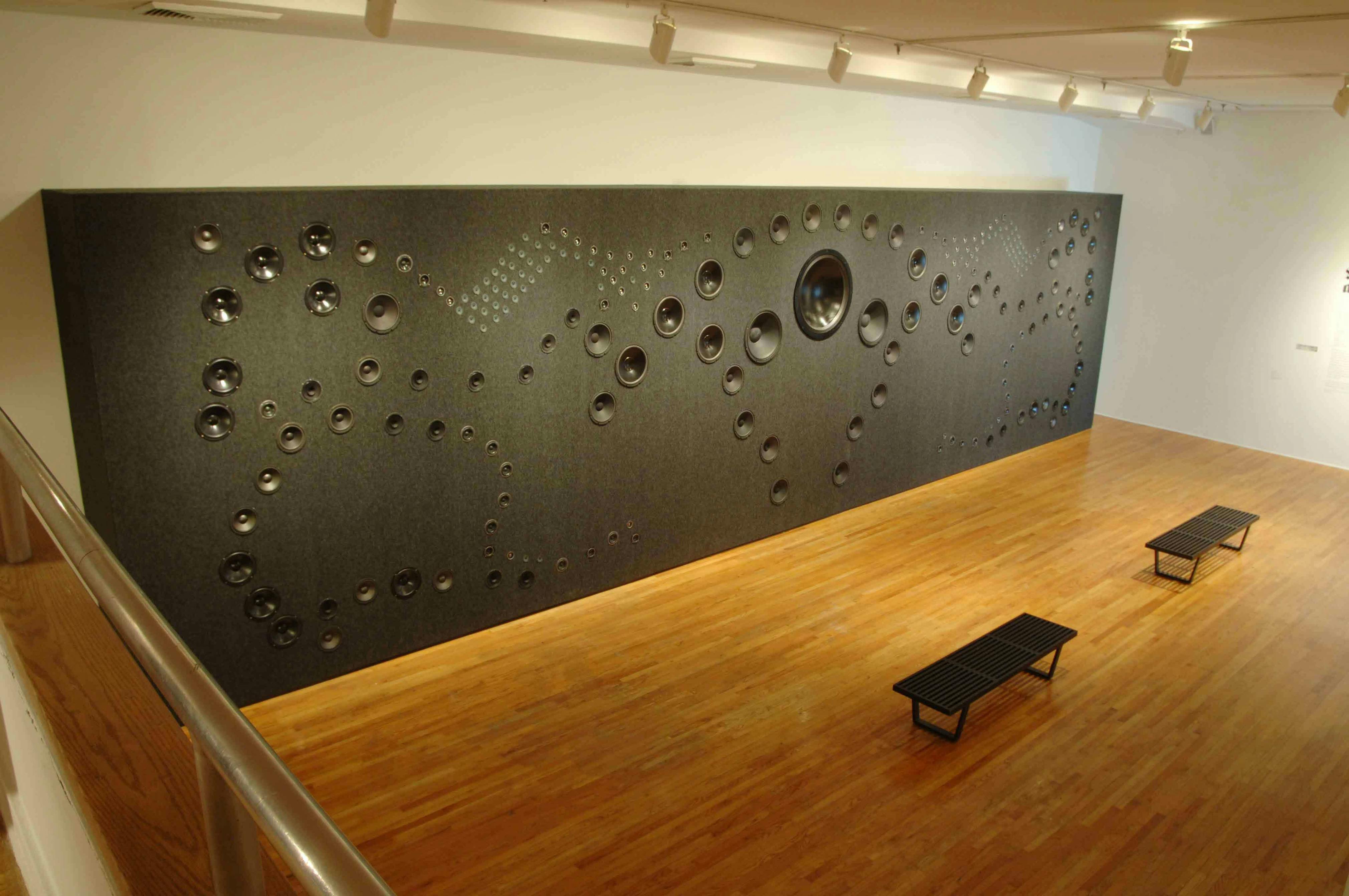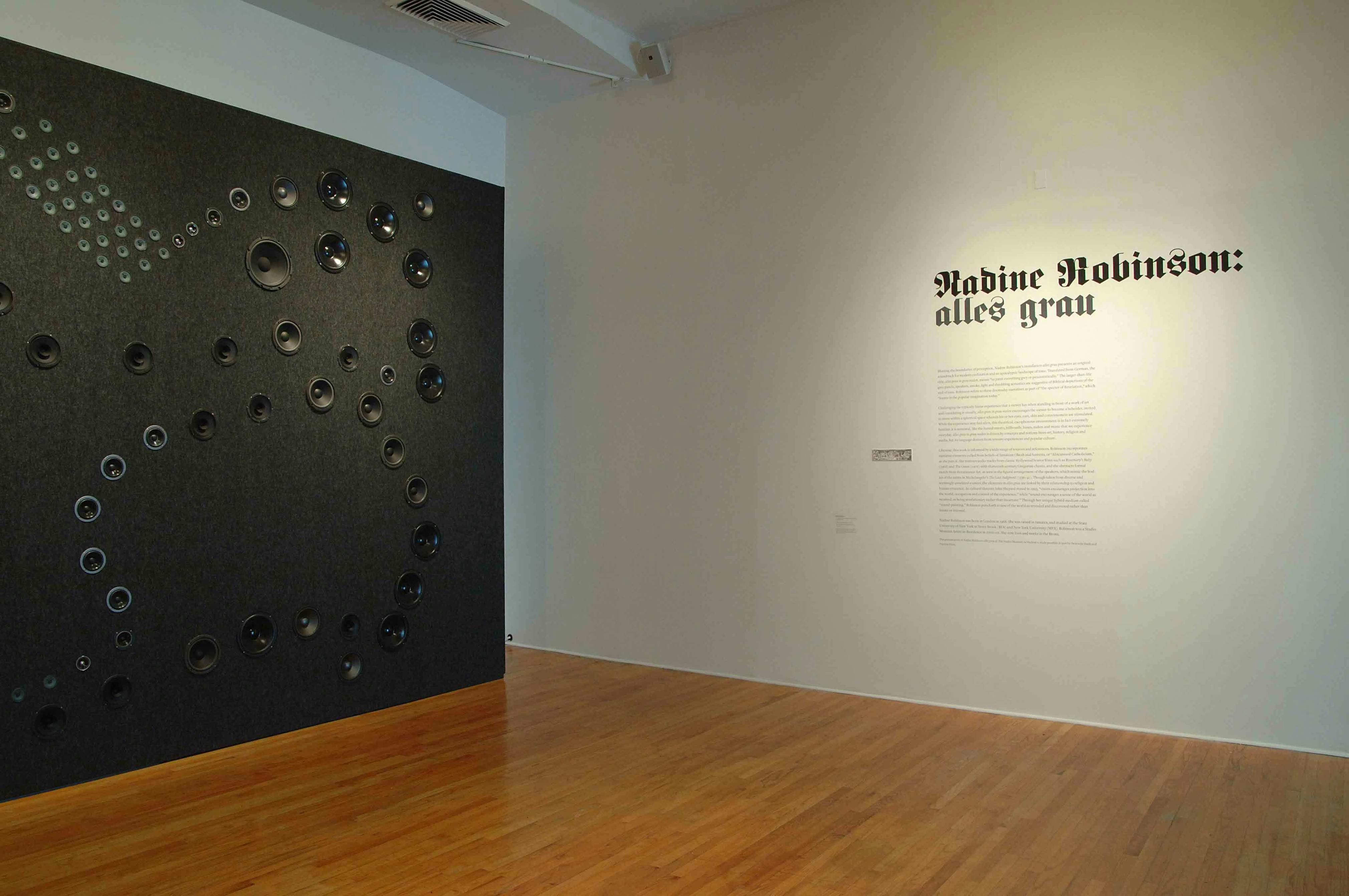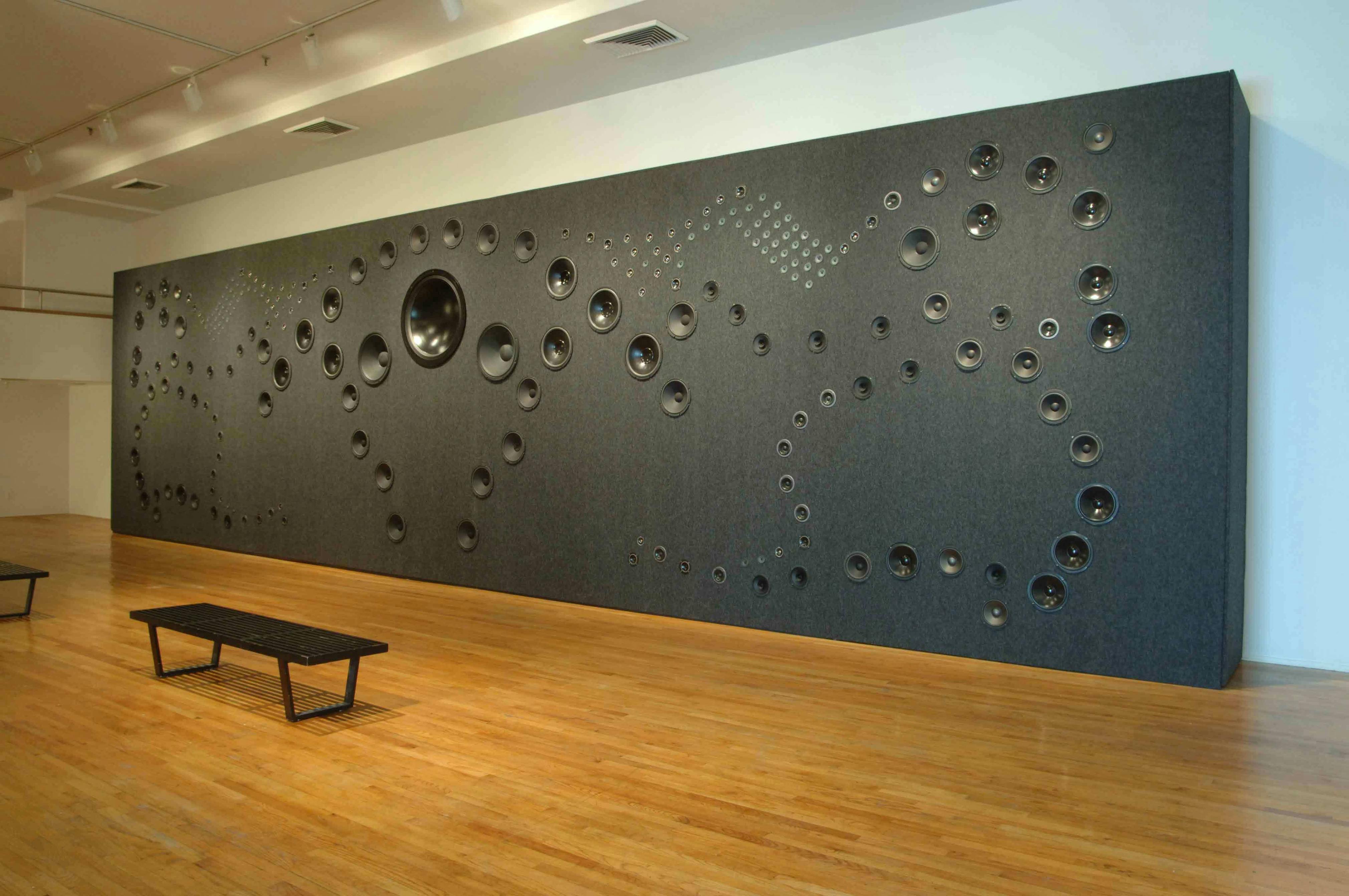Nadine Robinson
07.19-10.22.2006
Blurring the boundaries of perception, Nadine Robinson’s installation alles grau presents an original soundtrack for modern civilization and an apocalyptic landscape of time. Translated from German, the title, alles grau in grau malen, means “to paint everything grey or pessimistically.” The larger-than-life grey panels, speakers, smoke, light and throbbing acoustics are suggestive of Biblical depictions of the end of time. Robinson refers to these doomsday narratives as part of “the specter of Revelation,” which “looms in the popular imagination today.”
Challenging the typically linear experience that a viewer has when standing in front of a work of art and considering it visually, alles grau in grau malen encourages the viewer to become a beholder, invited to move within a spherical space wherein his or her eyes, ears, skin and consciousness are stimulated. While the experience may feel alien, this theatrical, cacophonous environment is in fact extremely familiar; it is sensorial, like the humid streets, billboards, buses, radios and music that we experience everyday. alles grau in grau malen is driven by concepts and notions from art, history, religion and media, but its language derives from sensory experiences and popular culture.
Likewise, this work is informed by a wide range of sources and references. Robinson incorporates narrative elements culled from beliefs of Jamaican Obeah and Santeria, or “Africanized Catholicism,” as she puts it. She remixes audio tracks from classic Hollywood horror films such as Rosemary’s Baby (1968) and The Omen (1976) with fifteenth-century Gregorian chants, and she abstracts formal motifs from Renaissance Art, as seen in the figural arrangement of the speakers, which mimic the bodies of the saints in Michelangelo’s The Last Judgment (1536-41). Though taken from diverse and seemingly unrelated sources, the elements in alles grau are linked by their relationship to religion and human existence. As cultural theorist John Shepard stated in 1993, “vision encourages projection into the world, occupation and control of the experience,” while “sound encourages a sense of the world as received, as being revelationary rather than incarnate.” Through her unique hybrid medium called “sound-painting,” Robinson puts forth a view of the world as revealed and discovered rather than innate or internal.
Nadine Robinson
07.19-10.22.2006
Blurring the boundaries of perception, Nadine Robinson’s installation alles grau presents an original soundtrack for modern civilization and an apocalyptic landscape of time. Translated from German, the title, alles grau in grau malen, means “to paint everything grey or pessimistically.” The larger-than-life grey panels, speakers, smoke, light and throbbing acoustics are suggestive of Biblical depictions of the end of time. Robinson refers to these doomsday narratives as part of “the specter of Revelation,” which “looms in the popular imagination today.”
Challenging the typically linear experience that a viewer has when standing in front of a work of art and considering it visually, alles grau in grau malen encourages the viewer to become a beholder, invited to move within a spherical space wherein his or her eyes, ears, skin and consciousness are stimulated. While the experience may feel alien, this theatrical, cacophonous environment is in fact extremely familiar; it is sensorial, like the humid streets, billboards, buses, radios and music that we experience everyday. alles grau in grau malen is driven by concepts and notions from art, history, religion and media, but its language derives from sensory experiences and popular culture.
Likewise, this work is informed by a wide range of sources and references. Robinson incorporates narrative elements culled from beliefs of Jamaican Obeah and Santeria, or “Africanized Catholicism,” as she puts it. She remixes audio tracks from classic Hollywood horror films such as Rosemary’s Baby (1968) and The Omen (1976) with fifteenth-century Gregorian chants, and she abstracts formal motifs from Renaissance Art, as seen in the figural arrangement of the speakers, which mimic the bodies of the saints in Michelangelo’s The Last Judgment (1536-41). Though taken from diverse and seemingly unrelated sources, the elements in alles grau are linked by their relationship to religion and human existence. As cultural theorist John Shepard stated in 1993, “vision encourages projection into the world, occupation and control of the experience,” while “sound encourages a sense of the world as received, as being revelationary rather than incarnate.” Through her unique hybrid medium called “sound-painting,” Robinson puts forth a view of the world as revealed and discovered rather than innate or internal.


